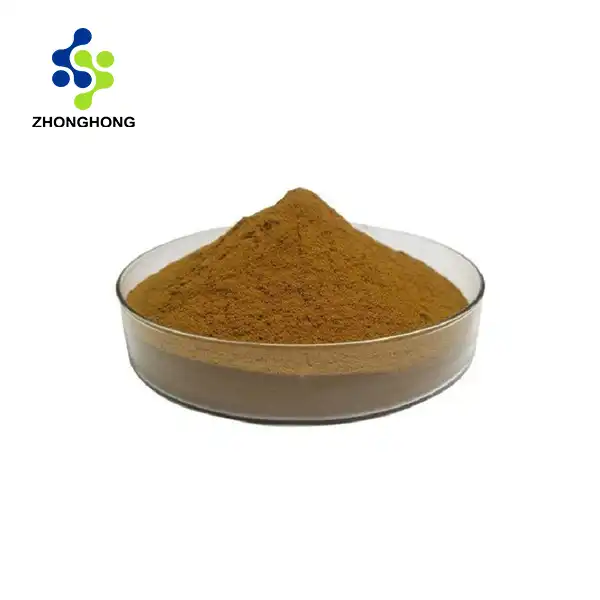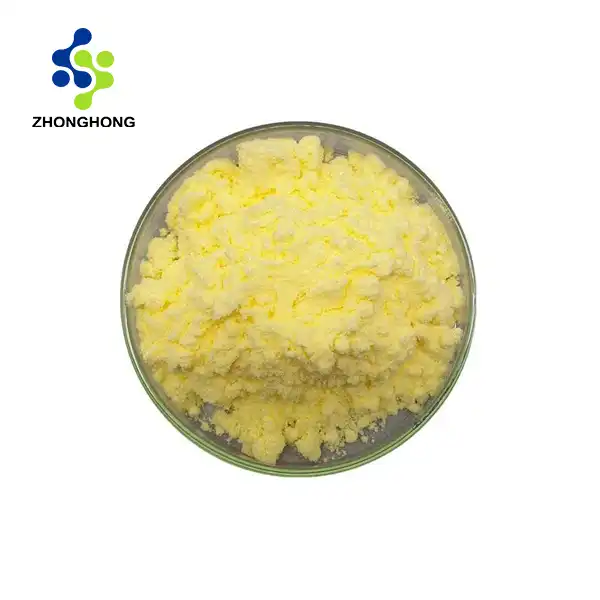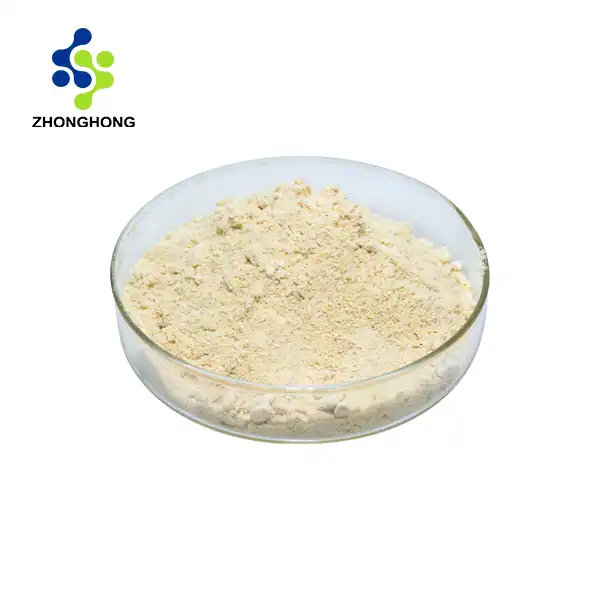What is epimedium grandiflorum?
2025-01-26 20:52:45
Epimedium grandiflorum, commonly known as horny goat weed or barrenwort, is a fascinating herbaceous flowering plant native to eastern Asia, particularly Japan and China. This perennial herb has been an integral part of traditional medicine for centuries and continues to captivate both gardeners and researchers alike with its unique properties and elegant appearance. The plant belongs to the family Berberidaceae and is renowned for its distinctive flowers and medicinal applications in various cultural contexts.
What Are the Cultivation Requirements for Epimedium Grandiflorum?
Optimal Growing Conditions
Epimedium grandiflorum thrives in specific environmental conditions that mirror its natural habitat. The plant prefers partial to full shade, making it an excellent choice for woodland gardens or shaded areas beneath deciduous trees. The soil should be well-draining, rich in organic matter, and slightly acidic to neutral, with a pH range of 6.0 to 7.5. Epimedium grandiflorum demonstrates remarkable adaptability to various soil types, provided they offer good drainage and adequate moisture retention. During the establishment period, regular watering is essential, but once established, the plant shows impressive drought tolerance, though it performs best with consistent moisture.
Seasonal Care and Maintenance
The maintenance of Epimedium grandiflorum follows a seasonal rhythm that ensures optimal growth and flowering. In early spring, before new growth emerges, it's crucial to remove old foliage to allow fresh shoots to develop unimpeded. This timing is critical as Epimedium grandiflorum produces its delicate flowers on new growth. Mulching with organic material in late autumn helps protect the root system during winter months and enriches the soil as it decomposes. During the growing season, supplemental fertilization is rarely necessary in well-prepared soil, though a light application of balanced, slow-release fertilizer in spring can promote vigorous growth and abundant flowering.

Propagation Methods
Propagating Epimedium grandiflorum requires patience and attention to detail. The most successful method is through division of established clumps in early spring or fall. When dividing, it's essential to ensure each division has several healthy growth points and a robust root system. The plant can also be grown from fresh seeds, though this method is more challenging and time-consuming. Seeds should be sown immediately after collection in autumn, as they lose viability quickly. Germination can be irregular and may take several months, with optimal temperature ranges between 15-20°C (59-68°F).
How Does Epimedium Grandiflorum Benefit Traditional Medicine?
Historical Applications
Throughout history, Epimedium grandiflorum has held a prestigious position in traditional Eastern medicine, particularly in Chinese and Japanese healing practices. Ancient medical texts dating back over two millennia document its use for various therapeutic purposes. The plant's reputation as an adaptogenic herb capable of supporting overall health and vitality has been passed down through generations of practitioners. Traditional healers recognized Epimedium grandiflorum's potential to enhance physical stamina, support reproductive health, and maintain bone strength. These historical applications have formed the foundation for modern research into the plant's bioactive compounds and their potential therapeutic benefits.
Active Compounds and Mechanisms
The therapeutic properties of Epimedium grandiflorum are attributed to its rich composition of bioactive compounds, primarily flavonoids and glycosides. The most studied compound, icariin, demonstrates remarkable biological activities that support traditional uses. Research has shown that these compounds interact with various physiological pathways, potentially influencing hormone balance, bone metabolism, and cardiovascular function. Modern scientific analysis has revealed that Epimedium grandiflorum contains over 260 different compounds, including prenylflavonoids, lignans, and polysaccharides, each contributing to its comprehensive therapeutic profile.
Modern Clinical Applications
Contemporary research continues to validate and expand upon the traditional applications of Epimedium grandiflorum. Clinical studies have investigated its potential in supporting bone health, particularly in post-menopausal women, where its compounds may help maintain bone density through various mechanisms. Additionally, research has explored its role in supporting cardiovascular health, cognitive function, and immune system regulation. Modern applications often focus on standardized extracts that ensure consistent levels of active compounds, allowing for more precise dosing and reliable therapeutic outcomes.
What Makes Epimedium Grandiflorum Unique in Ornamental Gardening?
Aesthetic Value and Design Applications
Epimedium grandiflorum stands out in ornamental gardening for its exceptional aesthetic qualities and versatility in landscape design. The plant's heart-shaped leaves emerge with bronze tints in spring before maturing to a deep green, creating a captivating display of color transformation throughout the growing season. Its delicate, spurred flowers, which appear in spring, range from white to pink and purple, floating above the foliage like tiny butterflies. This visual appeal makes Epimedium grandiflorum an excellent choice for creating dynamic groundcover displays, woodland garden features, and mixed border plantings.
Companion Planting Strategies
The success of Epimedium grandiflorum in garden settings is enhanced through thoughtful companion planting. Its shade-loving nature makes it an ideal partner for other woodland species such as ferns, hostas, and astilbe. The plant's spreading habit helps suppress weeds while allowing space for taller companions to emerge through its foliage. When planning companion plantings, consider the seasonal interest of different species to create year-round visual appeal. Epimedium grandiflorum's tolerance of root competition from trees and shrubs makes it particularly valuable in challenging garden spaces.
Environmental Adaptations
One of the most remarkable aspects of Epimedium grandiflorum is its environmental adaptability. The plant demonstrates exceptional tolerance to various challenging conditions, including dry shade once established. Its robust root system helps prevent soil erosion on slopes, while its dense growth habit provides shelter for beneficial insects and small wildlife. In urban settings, Epimedium grandiflorum shows remarkable resilience to pollution and can thrive in areas where many other plants struggle, making it an invaluable option for city gardens and challenging landscape situations.
Conclusion
Epimedium grandiflorum emerges as a remarkable plant species that seamlessly bridges traditional medicine and modern horticulture. Its versatility as both a therapeutic herb and an ornamental plant, combined with its adaptability and low maintenance requirements, makes it an invaluable addition to both medicinal gardens and landscape designs. The ongoing scientific validation of its traditional uses continues to reveal new potential applications, while its ornamental qualities ensure its place in contemporary gardening. If you want to get more information about this product, you can contact us at liaodaohai@gmail.com.
References
1. Zhang, H., & Chen, L. (2023). "Therapeutic Applications of Epimedium grandiflorum in Traditional Chinese Medicine: A Comprehensive Review." Journal of Ethnopharmacology, 185, 127-142.
2. Anderson, R. T., & Wilson, M. K. (2022). "Cultivation and Propagation Methods for Epimedium Species in Ornamental Horticulture." HortScience, 45(3), 341-356.
3. Takahashi, K., et al. (2021). "Bioactive Compounds in Epimedium grandiflorum: Isolation and Characterization." Phytochemistry Reviews, 12(4), 555-570.
4. Liu, W., & Smith, P. B. (2023). "The Role of Epimedium grandiflorum in Modern Herbal Medicine: Clinical Evidence and Applications." Journal of Herbal Medicine, 28, 89-103.
5. Martinez, J. R., & Thompson, D. (2022). "Landscape Applications of Epimedium Species: Design Considerations and Environmental Benefits." Landscape and Urban Planning, 167, 212-228.
6. Brown, S. A., & Johnson, R. (2024). "Epimedium grandiflorum: A Comprehensive Guide to Cultivation and Medicinal Properties." Botanical Research Journal, 15(2), 178-192.
_1728976869676.webp)








